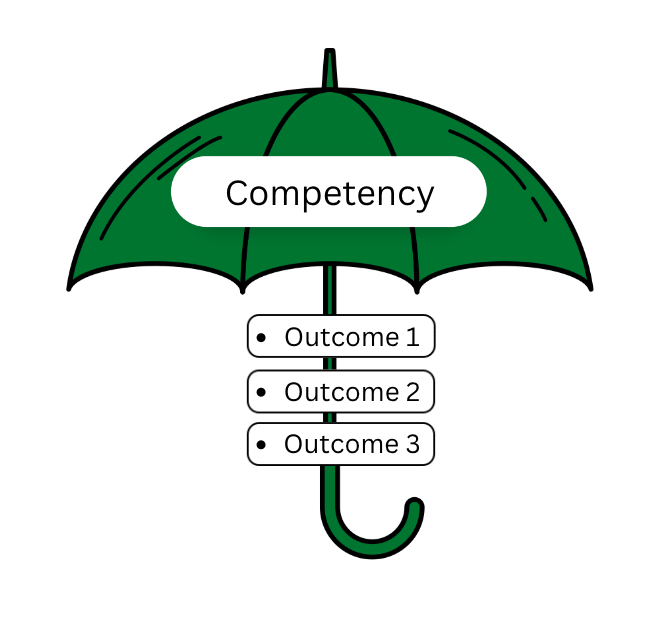Co-authoring Take 2: A co-authored post about co-authoring
Co-written y Carolyn Hoessler and Shannon Lucky, Library Systems & Information Technology
Earlier this year I excitedly read Shannon Lucky’s post on Co-authoring from April 21, 2015 on Brain-Work, sparking a chance to respond, connect and collaborate. In our discussion about co-authoring we captured a wide range of questions to ask and strategies that seemed to fit with the framework of the 5 Basic Elements of Cooperative Learning that we adapted to co-write this blog post. To see Shannon’s description of our collaboration visit http://words.usask.ca/ceblipblog/2015/08/27/co-authoring2/ where the following information is cross-posted on C-EBLIP.
– Carolyn
Co-authoring and collaborative research can be personally rewarding and can strengthen a project by tapping into multiple perspectives and disciplines. It can also be difficult and frustrating at times but conflicts can be minimized, or avoided altogether, through planning and clear communication.
The following checklist is based on the five basic elements of cooperative learning developed by Johnson, Johnson, & Johnson Holubec. Each element is defined and lists questions you should answer as a group and tips to keep in mind as your work progresses. These questions can feel uncomfortable or may lead to conflict, but it is better to have these hard conversations early and to sort out any impasses before it is too late. Sometimes collaborating with someone just doesn’t work and it can be better to identify these situations early and walk away on good terms rather than having a project fall apart mid-way through when lots of time, energy, and resources have already been invested.
Communicate early! Communicate often!
A good collaborative team needs:
1. Positive Interdependence – having mutual goals, pursue mutual rewards, and need each other to be successful.
Ask:
- What are my goals for the project and what are my co-author’s goals?
- This can include the number of publications you will write, the venue and format of publication, and timelines.
- What am I bringing to this project and what are other in the group bringing?
- Talk about your work style and preferences, personality, Myers-Briggs types, StrengthsFinders, what bugs you about working in groups – anything that will help your group get to know each others preferred work styles.
- Can the project be easily divided so that everyone has a defined task?
- Doing the literature review, editing, analyzing, referencing, etc.
- What will each of our roles on the project team be and will they be static or rotating?
- Note taking, coordinating meetings, synthesizing/pulling together ideas, etc.
- What will the author order be or how else will author contribution be recognized?
- How is this determined and is everyone in agreement?
Tips:
- Know thyself – figure out what has bothered you about past collaborations and what has worked well. Communicate this clearly to your team members and ask them what works and does not work for them. Be honest and upfront about your expectations.
2. Face-to-Face Promotive Interaction – reading each other’s expressions or tone and have positive interactions
Ask:
- How can we meet face-to-face, in the same room or using technology?
- Especially important when working at a distance. We must interact with each other in ways that avoid misunderstandings or assumptions and build consensus/respected distinction?
- How frequently should we meet and how will these meetings be arranged?
- Are all meetings planned at the start of the project? Who is required at the meetings and who will organize and lead them? When will they occur?
- What will our meetings look like?
- Will they be for planning and checking in on individual progress, working meetings, or discussion and co-creation focused?
- What is the length of our project?
- Confirm what collaborator and able and willing to commit to in advance. Situations can change, but having a rough expectation for required time and contribution to the group can help with contingency planning if need be.
- How will we create a good rapport and welcoming environment for the group?
- Whose job is it to set the tone? The meeting host and the content lead for the discussion don’t have to be the same person.
Tips:
- Pay attention to discussions happening over email and other non face-to-face interactions to ensure that positivity, respect, and encouragement is maintained.
- Make sure everyone in the group is included in discussions so no one becomes isolated or siloed in their piece of the project. This recommendation does not preclude small task groups or subgroups, but communication should be forefront.
3. Individual Accountability – each person knowing what they need to do, is able to do it, and does it on time.
Ask:
- What are the deliverables?
- What are realistic timelines for me? For my co-author(s)?
- What are our external deadlines?
- e.g., special issue deadlines, external reviewer, conferences, personal deadlines
- What will we do if we fall behind or need to step back?
- Anticipate setbacks and plan contingencies.
Tips:
- Make individuals accountable to the group and their collective goals, rather than to a single individual leader. Allow the weight of several people relying on and expecting each piece to prompt action. Also reduces the tracking and chasing of the leader.
- Make sure there is an explicit link between author order and contribution to the project or ensure another type of recognition for all authors.
4. Interpersonal And Small Group Skills – having the conflict-management, leadership, trust-building, and communication skills to build a well-functioning group
Ask:
- What skills do we already have in our group for leadership, conflict-management, facilitation etc.? What gaps exist and how can we fill them?
- This can mean adding a person or finding external support such as hiring a copyeditor.
- What roles do we all want to play on this project?
- Take care to consider each person’s workload and other projects they are involved with. You might not want to be the lead researcher or editor for multiple projects are the same time.
- What is my bandwidth for contributing to this project?
- Note if this is likely to change during the lifecycle of the project and how this will impact the group.
Tips:
- See what skill development opportunities are available in your area.
- Co-authoring might be an opportunity to either observe or practice a new skill
5. Group Processing – continuing to be a well-functioning group, checking in regularly and using the skills from element #4.
Ask:
- What points of coherence and dissonance have we identified as a group?
- How do our personalities in element #1 work together or against each other?
- How will we deal with disagreements?
- What is the plan when individuals do not fulfill their part of the project?
Tips:
- Revisit your roles and decisions periodically as a group.
- Build time to reflect and discuss the project into your meetings or schedule time specifically for this activity.
- Identify one next step or a change to improve your project and/or your work dynamic.
- Celebrate your successes!
Sources:
Johnson, David W., Roger T. Johnson, and Edythe Johnson Holubec.Cooperation in the Classroom. Edina: Interaction Book, 1991. Print.


